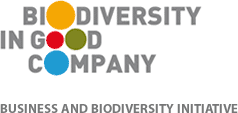Protecting water better
The Volkswagen Group will be campaigning more intensively for the protection of water, perhaps our most valuable resource. Water is the basis of life on our planetary home. Chairman Martin Winterkorn has therefore signed Volkswagen’s entry to the CEO Water Mandate, an initiative from companies, governments and associations seeking to work together to prevent a global water crisis.
According to the World Economic Forum’s “Global Risks 2013” report, leading experts from economics, politics and science identify water scarcity as one of humanity’s top 5 risks for the future. Since 2011, Volkswagen has been the only car manufacturer to regularly participate in the Water Disclosure Project, an annual survey on how water is being handled. In contrast to most of the other participants, the comprehensive data on Volkswagen’s water consumption are being published. The Group calculates that almost 90% of all water needed over the service life of three vehicle models is consumed by the upstream supply chain (which includes parts production).
Wolfram Thomas, Group Representative for the Environment, says “Water is far more than just an important component in production. It is also a guarantee of biodiversity – the diversity of plants and animals on earth. We will do everything we can to protect this precious gift.” autogramm lists a few examples from Volkswagen’s environment programme “Think Blue. Factory.”:Volkswagen’s “Think Blue. Factory.” programme sets standards for water consumption in production. The goal is to reduce consumption of fresh water by 25% by 2018. To achieve this, several fields of action on the issue of water will come into increased focus.
“Water is a guarantee of animal diversity”
Each of the 27 sites receives a toolkit. It contains tools for identifying and implementing measures for improvement. Some processes can be optimised to the degree that they no longer require water at all. In component production, for instance, production is increasingly being switched to dry machining. This means that costly, preparatory, water-based cooling emulsions are no longer required.
Because it is not permitted for production to negatively impact natural water supplies, protection of ground and soil water is also part of the water strategy. Furthermore, Volkswagen strives for environmentally compatible processes, so that the water used and released from its factories places as low a strain as possible on the environment. In a collaboration with Comenius University, the factory at Bratislava has constructed a breeding station for endangered crayfish in its purification plant. The purified water is so clean, that these sensitive creatures enjoy optimal living conditions before being returned to suitable rivers. Using alternative sources of water is also part of “Think Blue. Factory.”. Rain and industrial water can be used in cooling systems and to flush toilets. Measures to restore natural water supplies should also be supported. One example of this is the reforestation project in Puebla (Mexico): the trees retain the rain water that previously drained downhill to the rivers. This water now flows more naturally. Other ways of reducing waste water are the factories’ purification plants, such as the latest generation at Foshan, China: water from sanitary facilities and prepared industrial water are filtered using a membrane bioreactor, which cleans the water to a purity fit for bathing. At the factory in Wolfsburg, a new water-heating technology means savings in both district heating and electricity consumption have been achieved. The hot water for the paintshop is heated on site in new boiler plants. This saves not only long transport routes, but also over 18,000 megawatt hours of district heating and more than 4,000 megawatt hours of electricity per year. Last but not least, employee awareness also has an important role to play. Training programmes can focus attention on how water is used, and with considerable success: employee handling of water alone has led to a reduction of up to 0.5 cubic meters per vehicle of this precious resource.
